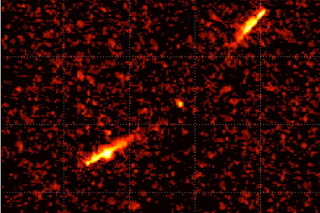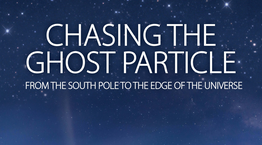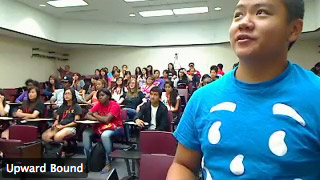Innovate
WIPAC’s partnerships and innovative programs continue to bring genuine astrophysics research experiences to a variety of audiences through new and familiar technologies.
DECO, the Cosmic-Ray Detector in Your Pocket
 The Distributed Electronic Cosmic-Ray Observatory (DECO) is an effort to harness the global network of mobile devices to detect cosmic radiation. DECO is part of the Global Sensor Web, a framework for collecting data from distributed sensors.
The Distributed Electronic Cosmic-Ray Observatory (DECO) is an effort to harness the global network of mobile devices to detect cosmic radiation. DECO is part of the Global Sensor Web, a framework for collecting data from distributed sensors.
DECO is a cosmic-ray detector app that runs on Android OS (iOS is in development). The app works by recording a camera image once every 1-2 seconds, when there´s no light reaching the camera. Those images are then analyzed to identify cosmic-ray events.
WIPAC is currently working with high school teachers and students to improve the app and to create curricula and resources to foster the use of the app in the classroom.
The project is supported by the American Physical Society, the Knight Foundation, and the Simon-Strauss Foundation. Teacher participation is supported by QuarkNet.
For more information, please visit our DECO website.
Chasing the Ghost Particle
 In this 30-minute show, stunning simulations of the most energetic places in our universe, and the galaxies around us, are the prelude to a thrilling journey inside IceCube, looking for traces of neutrino collisions in the ice. From one of the most remote locations on Earth to the unexplored regions of the cosmos, Chasing the Ghost Particle: From the South Pole to the Edge of the Universe will take you on a journey you won’t forget.
In this 30-minute show, stunning simulations of the most energetic places in our universe, and the galaxies around us, are the prelude to a thrilling journey inside IceCube, looking for traces of neutrino collisions in the ice. From one of the most remote locations on Earth to the unexplored regions of the cosmos, Chasing the Ghost Particle: From the South Pole to the Edge of the Universe will take you on a journey you won’t forget.
WIPAC and the Daniel M. Soref Planetarium at the Milwaukee Public Museum produced and distributes this fulldome planetarium show. Download the flatscreen version, watch the trailer and find out how to bring this show to a planetarium near you, please visit the Chasing the Ghost Particle page.
Webcasts
 Live connections with scientists and specialists at the South Pole Amundsen-Scott Station are offered each austral summer. Webcasts transport audiences across the globe to the coldest, most remote place on Earth where international collaborations are developing new ways to explore the universe.
Live connections with scientists and specialists at the South Pole Amundsen-Scott Station are offered each austral summer. Webcasts transport audiences across the globe to the coldest, most remote place on Earth where international collaborations are developing new ways to explore the universe.
Participants learn about the three WIPAC projects—IceCube, ARA, and DM-Ice—and the wide range of talent it takes to develop and run a successful project at the South Pole. Scientists, technicians, graduate students, and support personnel like chefs, plumbers, medical staff, communications technicians, and engineers all play vital roles in the operation of the South Pole station. Students and the public have a chance to ask questions and hear firsthand from professionals about what it is like to live and work in one of the most extreme environments on Earth.
Everyone is welcome to join our webcasts—teachers and their students, college students, researchers, the media, and members of the public. Participation is free and requires minimal technology. To learn about future webcasts, please visit the IceCube webcast page. This year our partners at McMurdo station will also offer webcasts about their neutron monitor project on January 10, 17, and 20 each at 12:30 CST. To sign up, please fill out this form.
Planetarium Partnerships
 In addition to the partnership with the Milwaukee Public Museum to produce Chasing the Ghost Particle, WIPAC also collaborated to upgrade the planetarium at the University of Wisconsin–River Falls. The planetarium is outfitted with a digital projector, which allows it to move beyond standard viewing of the night sky to become a broader visualization center including IceCube education programs. Plans are underway to expand the network of digital domes across the state of Wisconsin. This network will efficiently and effectively connect geographically dispersed audiences to allow exploring the universe in new ways.
In addition to the partnership with the Milwaukee Public Museum to produce Chasing the Ghost Particle, WIPAC also collaborated to upgrade the planetarium at the University of Wisconsin–River Falls. The planetarium is outfitted with a digital projector, which allows it to move beyond standard viewing of the night sky to become a broader visualization center including IceCube education programs. Plans are underway to expand the network of digital domes across the state of Wisconsin. This network will efficiently and effectively connect geographically dispersed audiences to allow exploring the universe in new ways.
